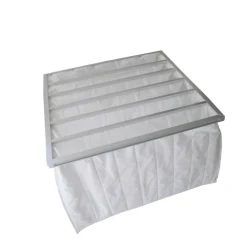Key features and aspects of bag filters
2024-01-26
Bag filters are a type of filtration equipment commonly used to remove particles and impurities from liquids. They are widely employed in various industries, including water treatment, industrial processes, chemical manufacturing, and more. Here are key features and aspects of bag filters:
1. Design and Structure:
- Bag Material: Bag filters are typically made of materials like felt, mesh, or other synthetic materials. The choice of material depends on the type of particles to be filtered and the application.
- Bag Shape: Bag filters are shaped like a cylindrical bag with an opening at the top. The bottom end is sealed, and the liquid to be filtered enters through the top opening.
2. Micron Ratings:
- Defined Pore Sizes: Bag filters come in various micron ratings, indicating the size of particles they can effectively capture. The micron rating helps specify the filter's performance in retaining particles of a certain size.
3. Applications:
- Water Treatment: Bag filters are commonly used in water treatment plants for the removal of sediment, dirt, and impurities from drinking water and industrial process water.
- Industrial Processes: Bag filters play a crucial role in various industrial processes, including chemical processing, oil refining, and manufacturing, where the removal of particulates is essential.
- Food and Beverage: Bag filters are used in the food and beverage industry to clarify liquids and remove contaminants from products like juices, syrups, and beverages.
- Pharmaceuticals: In pharmaceutical manufacturing, bag filters are utilized for the filtration of liquids and the removal of particles to meet stringent quality standards.
4. Configuration:
- Single and Multi-Bag Housings: Bag filters can be used in single-bag housings or multi-bag housings, depending on the flow rate and the filtration requirements of the system.
- Top-Load and Bottom-Load Housings: Bag filters can be loaded from either the top or the bottom, depending on the design of the filter housing.
5. Filtration Efficiency:
- High Filtration Efficiency: Bag filters offer high filtration efficiency for the removal of particles from the liquid being filtered.
6. Installation and Replacement:
- Easy Installation: Bag filters are typically easy to install and replace. They are often designed for quick and straightforward replacement during routine maintenance.
- Disposable or Reusable: Bag filters can be disposable, replaced entirely after use, or reusable, where the bag is removed, cleaned, and reinstalled.
7. Variety of Sizes:
- Different Sizes: Bag filters are available in various sizes to accommodate different flow rates and filtration needs.
8. Bag Retention Mechanisms:
- Snap-Ring Closures: Some bag filters use snap-ring closures to secure the bag in the housing.
- Zipper Closures: Others may have zipper closures for easy installation and removal.
9. Specialized Bag Filters:
- Activated Carbon Bags: Similar to cartridge filters, bag filters can be impregnated with activated carbon to adsorb impurities, odors, or chemicals from the liquid being filtered.
- Nominal and Absolute Filters: Bag filters may be classified as nominal (typically used for coarse filtration) or absolute (used for fine filtration) based on their efficiency.
10. Differential Pressure Monitoring:
- Monitoring System: Bag filter housings may be equipped with differential pressure gauges to monitor the pressure drop across the filter. This helps indicate when the filter needs replacement.
11. Pre-filtration and Final Filtration:
- Pre-filtration: Bag filters are often used as pre-filters to remove larger particles, protecting downstream equipment or finer filters.
- Final Filtration: Bag filters can also serve as the final stage of filtration to ensure the quality of the processed fluid.
When selecting a bag filter for a specific application, considerations such as particle size, flow rate, filtration efficiency, and compatibility with the fluid being filtered should be taken into account. Routine maintenance, including regular replacement or cleaning, is crucial to ensure optimal performance and prevent any compromise in filtration efficiency.



